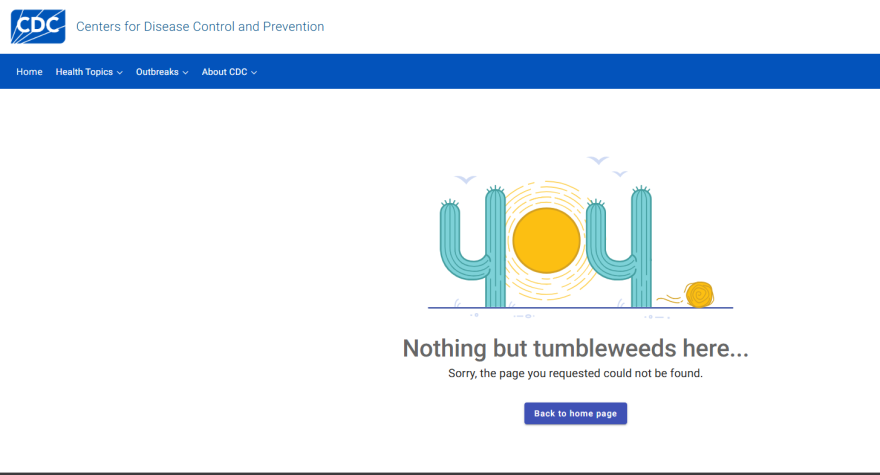Have you checked the weather forecast on your phone lately? Chances are you're seeing a report based on the work of the National Weather Service, and it doesn't stop there.
For many people, data collected by federal agencies plays a role in daily life, including water tables, population figures, health statistics, and much more.
But under the second Trump administration, some chunks of federal data are disappearing or being altered. That's the subject of an article from The Conversation.
Margaret Levenstein is a professor at the Institute for Social Research at the University of Michigan and the director of the Inter-university Consortium for Political and Social Research. She co-authored the article with U of M Research Assistant Professor John Kubale.
Levenstein spoke with Michigan Public Morning Edition host Doug Tribou.
DT: Would you walk us through some of the ways that data are used by you and your colleagues and other researchers around the country, the connection between the reports and stories that we end up seeing and the federal data behind them, just to give us a sense of what we're talking about more generally?
ML: There are lots of ways that ordinary people use federal data in their daily lives that they may or may not be aware of. Things like traffic patterns. Where do we need new roads and where do we need stoplights? And how many kids' spaces should we plan for kindergarten for the fall? Researchers also use these to help us to understand how best to provide public services. How do we actually plan for disaster preparedness? All of those use regularly produced, reliable, high quality federal statistical data products.
DT: In the public discourse, we frequently hear debates about public versus private enterprise and what's the best way to go. But something that I have heard, covering the news, over and over again over the years is that federal data is the gold standard. Could you explain why that is and why it's important?
ML: It's the gold standard for a number of reasons. One is it is intentionally representative of the entire population. The second thing is the federal government is very transparent in how it produces data, and it does so in ways that are consistent over time. If you rely on data from a private company that's producing the data for its own purposes, it may well, for perfectly rational business purposes, change the way it collects data over time, but it's not going to announce that to the world.
DT: Let's dig into some of the specifics from your article. You note that roughly 8,000 pages were removed from federal websites shortly after President Trump took office in January. What kinds of pages were removed and how has that played out since?
ML: Well, there were entire websites of the federal statistical system that came down, in particular the Centers for Disease Control and the National Center for Health Statistics. The entire Census Bureau site was down for a while. They've brought those sites back up. Most of the data that was available through those websites is now available again.
In some cases, the data that was brought back has been changed. Any data that measures gender identity or has non-binary gender, those measures have been removed from those data sets or obscured in some way. And in some data about vaccines also, those data sets in particular have come back modified. And you wouldn't know that they've been changed unless you compared them to the previous version.
"These are investments that make a stronger country and a stronger economy, and it's really important that we preserve them."University of Michigan Professor Margaret Levenstein on research data collected by the federal government
DT: One of the examples you cite in the article is the Pregnancy Risk Assessment Monitoring System, which provides key data on maternal and child health in the U.S. Could you explain what's happened with that system and what's been lost in the process?
ML: So that is the most important study that we have. It's critical to being able to provide good services to pregnant women in the United States and in understanding where we're doing a good job and where we're not doing a good job and improving our services.
It is not clear what the future of that study is, just because of changes in the staffing at the agency that produced it. Even where there aren't policy changes, the quality of the data is hurt because there aren't people who understand where the data came from and can collect it and assemble it in the same way. Or there aren't people to do it at all.
There are also other cases where there's data that's available, but there's nobody to approve anyone getting access to it. So people who were asking to use it, their request just went into a black hole.
DT: Are you aware of any other examples in US history where a presidential administration created large gaps in, or made major alterations to, batches of data like is happening now?
ML: No.
DT: There are people and groups trying to stop the loss of this federal data. How are they going about that?
ML: There are lots of organizations and people who are rescuing data from websites where the federal government makes it available, and putting it into something which we call Data Lumos, which is an archive for at-risk data here at ICPSR. They download it and they put it either in Data Lumos or some other repository where it can be made available.
There also are organizations like the Internet Archive which runs the Wayback Machine that does the same thing not with data but with websites themselves.
DT: You touched on it a moment ago, and one of the things that stood out to me about your article was the idea that this is data that U.S. citizens have paid for. I hadn't thought of it that way before... that it's something we've paid for and received, and access to it was sort of presumed before, but now is in question, I guess.
ML: We live in a world, and I think everyone knows this, in which data and information has enormous value. It would be like going through and plowing up interstate highways that are vital to to our society and to our economy. And we've spent billions of dollars making them and then just plowing them up and turning them back into dirt roads. Why would we do that? These are investments that make a stronger country and a stronger economy, and it's really important that we preserve them.
DT: Is one of the concerns among you and your colleagues, in addition to the known issues of gaps and lost information, the factor of the unknown of what could come out of research, the benefits that we we don't know? The potential for loss, I would imagine, [is] in the back of your mind.
ML: Absolutely. There are cures for disease. There are social problems, whether it's the high cost of housing or poverty or how well kids are doing in school. We will not have the data to do those analyses and to make better decisions about how to improve our lives and our communities, and we won't know what we're missing. Where the government is not collecting data going forward, we're going to have gaps in our knowledge about ourselves and about our country.
Further reading: “Data that taxpayers have paid for and rely on is disappearing – here’s how it’s happening and what you can do about it” by Margaret Levenstein and John Kubale for The Conversation
Editor's note: Quotes in this article have been lightly edited for length and clarity. You can listen to the full interview near the top of this page.








